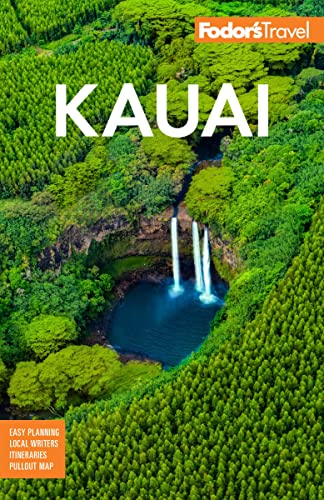Kauai Today
Hawaiian culture and tradition here have experienced a renaissance over the last few decades. There's a real effort to revive traditions and to respect history as the Islands go through major changes. New developments often have a Hawaiian cultural expert on staff to ensure cultural sensitivity and to educate newcomers. Kauai public, private, and charter schools now offer full-time course work in the Hawaiian language.
Nonetheless, development remains a huge issue for all Islanders—land prices are still skyrocketing, putting many areas out of reach for locals. Approximately 45% of recent new housing on Kauai is bought by off-island purchasers, often as second homes. Traffic is also a major problem on aging Kauai roads that were not designed to accommodate all the new drivers as well as the surge in tourism. Plus, the Islands' limited natural resources are being seriously tapped.
Sustainability
Although sustainability is an effective buzzword and authentic direction for the Islands' dining establishments, 90% of Hawaii's food and energy is imported, though solar power is making a major inroad in power production. On some sunny days, for a few hours, the Kauai electric grid is more than 95% powered by alternative-energy sources. In fact, Kauai leads the state in alternative energy solutions, including hydro.
Most of the land was used for mono-cropping of pineapple or sugarcane, both of which have all but vanished. Sugarcane is now a memory, while pineapple production has dropped precipitously. Dole, once the largest pineapple company in Hawaii, closed its plants in 1991, and after 90 years, Del Monte stopped pineapple production in 2008. But the Islands have perfected a sugar pineapple that is way less acidic than the usual ones. Although the imports have negatively affected market share, they have also set the stage for great agricultural change to be explored.
Back-to-Basics Agriculture
Emulating how the Hawaiian ancestors lived and returning to their simple ways of growing and sharing a variety of foods have become statewide initiatives. Many Kauai locals buy all their fruit and produce from the numerous farmers’ markets, which often feature exotic in-season crops at reasonable costs.
The seed of this movement is thriving with various farmers' markets and partnerships between restaurants and local farmers. Localized efforts such as the Hawaii Farm Bureau Federation are collectively aiding the organic and sustainable agricultural renaissance. From home-cooked meals to casual plate lunches or fine-dining cuisine, these sustainable trailblazers enrich Kauai’s culinary tapestry. The recent “explosion” of food trucks offering various cuisines also uplifts the overall quality of life.
Tourism and the Economy
The $17 billion tourism industry represents more than a third of Hawaii's state income. Naturally, this dependency caused economic hardship when the 2008 financial meltdown affected tourists' ability to visit and spend, but the tourism industry has bounced back stronger than ever.
One way the industry has changed has been to adopt more eco-conscious practices, as many Kauai residents feel that development shouldn't happen without regard for impact to local communities and their natural environment.
The belief that an industry based on the Hawaiians' aloha should protect, promote, and empower local culture and provide more entrepreneurial opportunities for local people has become more important to tourism businesses. More companies are incorporating authentic Hawaiiana in their programs and aim not only to provide a commercially viable tour but also to ensure that the visitor leaves feeling connected to his or her host.
The concept of kuleana, a word denoting both privilege and responsibility, is a traditional value. Having the privilege to live in such a sublime place comes with the responsibility to protect it.
Sovereignty
Political issues of sovereignty continue to divide Native Hawaiians, who have formed myriad organizations, each operating with a separate agenda and lacking one collectively defined goal. Ranging from achieving complete independence to solidifying a nation within a nation, existing sovereignty models remain fractured and their future unresolved.
The introduction of the Native Hawaiian Government Reorganization Act of 2009 attempts to set up a legal framework in which Native Hawaiians can attain federal recognition and coexist as a self-governed entity, similar to Native American status. Also known as the Akaka Bill, after former Senator Daniel Akaka of Hawaii, this bill has been presented before Congress and is still pending.
Rise of Hawaiian Pride
After the overthrow of the monarchy in 1893, a process of Americanization began. Traditions were duly silenced in the name of citizenship. Teaching the Hawaiian language was banned from schools, and children were distanced from their local customs.
But Hawaiians are resilient people, and with the rise of the civil rights movement they began to reflect on their own national identity, bringing an astonishing renaissance of the Hawaiian culture to fruition.
The people rediscovered language, hula, chanting, and even the traditional Polynesian arts of canoe building and wayfinding (navigation by the stars without use of instruments). This cultural resurrection is now firmly established in today's Hawaiian culture, with a palpable pride that exudes from Hawaiians young and old.
The election of former President Barack Obama increased Hawaiian pride. The president's strong connection and commitment to Hawaiian values of diversity, spirituality, family, and conservation have restored confidence that Hawaii can inspire a more peaceful, tolerant, and environmentally conscious world.
The Arts
The Hawaiian Islands have inspired artistic expression from the time they were first inhabited. From ancient hula to digital filmmaking, the arts are alive and well. Honolulu is the artistic hub of the state. The Honolulu Museum of Art has an impressive permanent collection and hosts major exhibitions throughout the year. It comprises four locations, including the spectacular Shangri La, the former home of heiress Doris Duke, filled with Islamic treasures. The Hawaii Theater in Honolulu—a restored art deco palace—stages theatrical productions, concerts, and films. The Maui Arts & Cultural Center (MACC) has a 1,200-seat theater for concerts, theatrical productions, and film, as well as an amphitheater and art gallery. Numerous art galleries thrive on the Islands.




